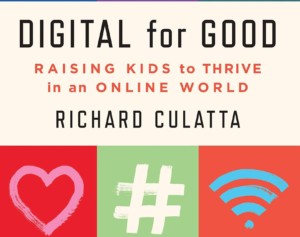Three Shifts as Big as Print to Digital

Almost 480 years ago, Johannes Gensfleisch zur Laden zum Gutenberg introduced movable type and a printing press and (although he was financially unsuccessful) launched a revolution that profoundly changed society.
We just lived through the biggest shift in learning since the printing press—a 25-year shift from print to digital. While it extended access and options to billions, it didn’t prove as transformational as many of us expected. It did, however, set the stage for three shifts that will change what and how people learn.
Basic to broader aims. Workplace expectations are changing fast. Basic skills remain important but the innovation age requires new outcome priorities including:
- Design skills: an iterative problem-solving approach;
- Entrepreneurship skills: taking initiative and learning to deliver value; and
- Social skills: collaborating on diverse teams.
New outcome frameworks gaining traction value success skills:
- NGLC MyWays: a well-developed framework from Next Generation Learning Challenges stressing applied knowledge. MyWays includes “wayfinding” and “creative know-how.”
- ACT Holistic Framework: early learning to job training, has assessments behind most dimensions
- XQ Learner Goals: a composite framework that provides guidance to 18 super school grantees. To “creative and generative thinking,” XQ adds “Learning for life”.
- KnowledgeWorks’ Foundation of Readiness puts social and emotional at the heart of an outcome framework focused on the future of work.
Passive to active learning. Most important to learners is the shift to student-centered learning including:
- Advisory systems that monitor academic and social growth, build college and career awareness and tailor individual learning plans.
- Blending interests and standards in ways that personalize learning and reflect individual differences.
- Extended challenges: integrated community-connected projects (see HQPBL).
Time to demonstrated learning. There is a global trend toward demonstrated competence over time-bound learning and traditional pedigrees. There aren’t yet consistent ways to measure learning and the tools are immature. Technical, structural, political and talent challenges abound.
We’re in the early innings of what will be a multi-decade shift but competency-based learning holds the promise of enabling personalized anywhere anytime learning. With a focus on equity, competency-based systems will provide more time and resources to struggling students to accelerate their progress.
These shifts are changing what students should know and be able to do, the experiences designed to promote their growth, and how they communicate their new capabilities. These related shifts are promising but challenging—and are likely to shape the next 30 years of global education.
For more, see:
Stay in-the-know with all things edtech and innovations in learning by signing up to receive the weekly Smart Update. This post includes mentions of a Getting Smart partner. For a full list of partners, affiliate organizations and all other disclosures, please see our Partner page.








Kimberley
Excellent article. I am going through a few of these issues as well..